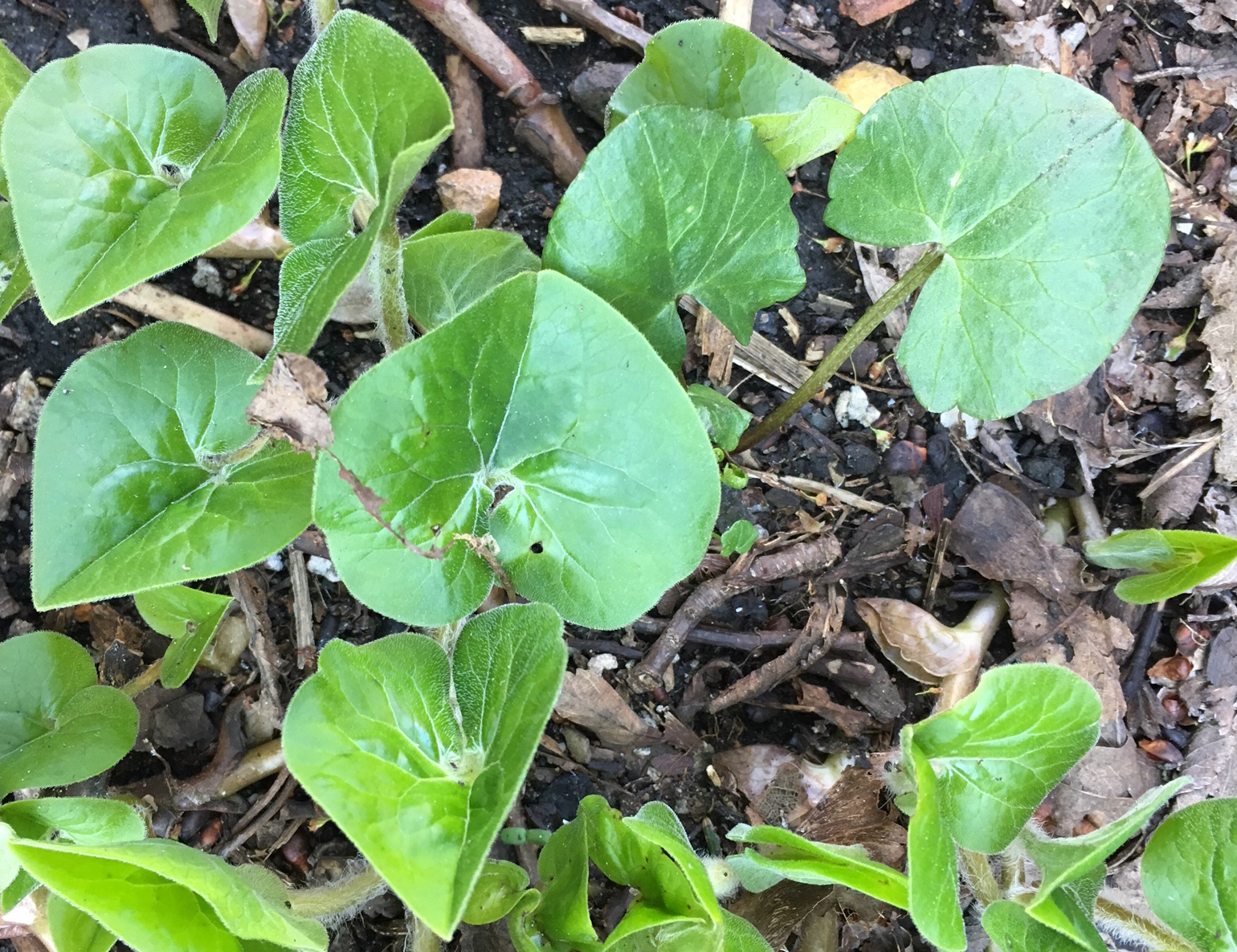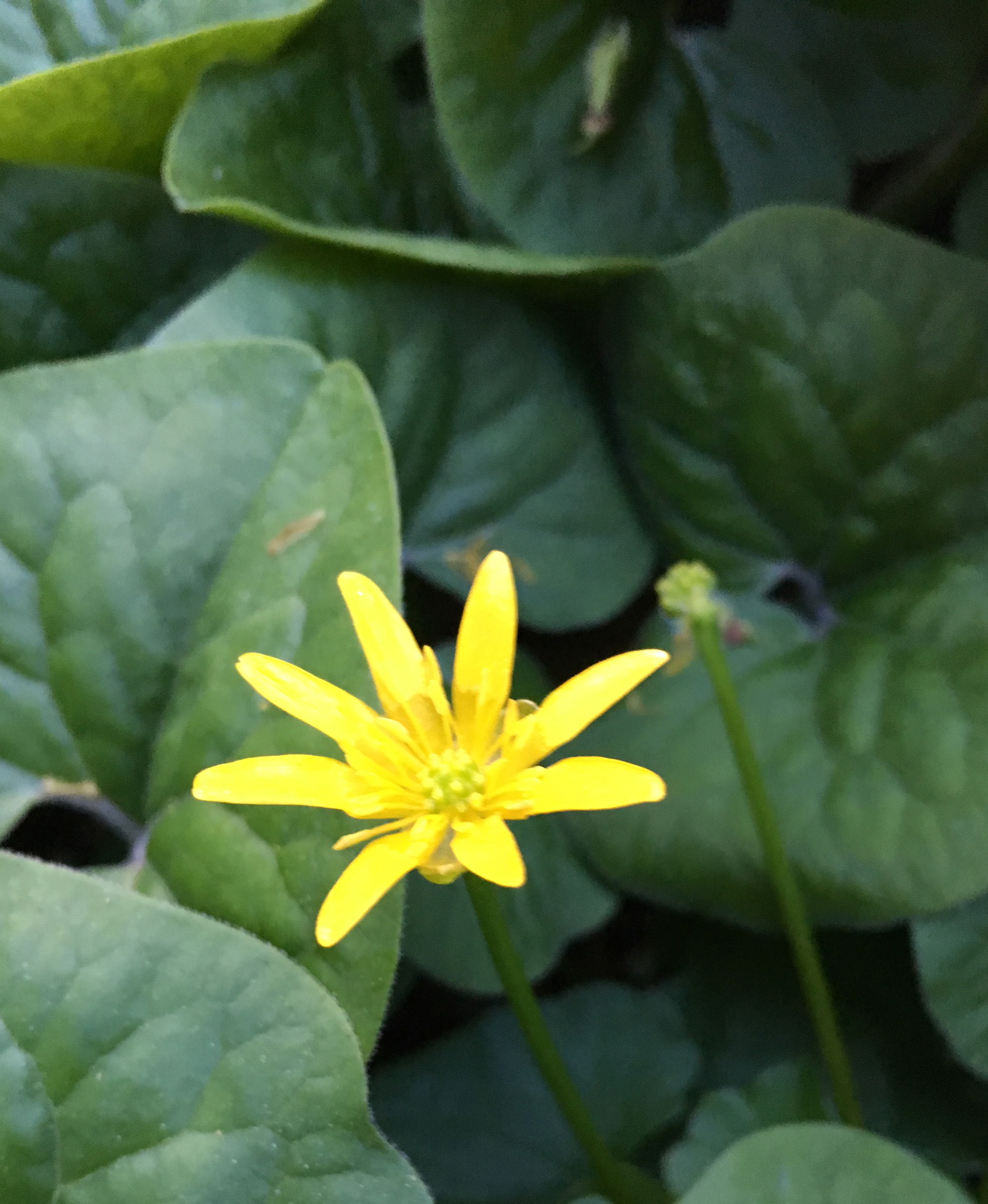
I was out in the garden on a bright spring day, enjoying the fresh green of the unfolding fern fiddleheads, the yellow of daffodils, the white of the bloodroot and purple of the sharp-lobed hepatica in my wildflower garden, the unfolding leaves of the native wild ginger, when something seemed … wrong.
My Spidey sense tingled with the feeling that, to a gardener, can only mean “weed!” There, amid the ginger’s heart-shaped leaves, I spotted one leaf that was just a little bit too round. Was it the dreaded creeping Charlie (Glechoma hederacea), with its insidious slender stems that snake among the grass blades and shade perennials? No, there were no scallops on this leaf’s margins. This was something even worse: lesser celandine (Ficaria verna).
To a British nature lover such as the poet William Wordworth, lesser celandine may be a charming wildflower. But here in the American Midwest, far from its native ecosystem, it’s a hugely destructive invasive plant, forming a dense mat that crowds out our own wildflowers in natural areas. And in the garden, especially the shade garden, it’s a fierce weed. Where lesser celandine grows, nothing else will.
Early spring is the time to tackle weeds, before they set flower and set seeds. But that requires the experience and alertness to spot a weed by its small, new leaves alone. Are they round or pointed? Do they trail along a stem or form a rosette? Are they most likely seen in sun or shade?
With so many sprouts at this time of year, it’s critical to be able to tell the difference between the malefactors and the plants I’m actually trying to protect from the weeds. I recall with chagrin my second year as a gardener, when I weeded out most of the perennials I had planted the first year.
Experience teaches weedcraft. If I hadn’t spent so many hours the last few years grubbing out mats of lesser celandine from among my ferns, groundcovers, hostas and shrubs, I might not have been able to tell the difference between its leaves and those of the surrounding wild ginger. But now it’s a major player on my Weeds Most Unwanted list, along with creeping Charlie, quack grass, barren strawberry, and Norway maple seedlings. I know every vein in these plants’ leaves, and I will fight them to the death. Online sources can help me identify many more.

Spring also brings weed warfare to the greenhouse. Yes, conservatories get weeds. Every time you enter, you may bring weed seeds in the mud o your boots. Every new plant you buy may have seeds lurking in the potting mix. And we all know how well seeds sprout in a hothouse.
To control weeds in a conservatory, first try to keep them out. Wipe your boots and keep your tools clean. Quarantine new plants for a few days to watch for weed seedlings. Clean every surface once or twice a year. If you spot weeds growing in corners or under benches, remove them by hand. Avoid herbicides, because in the closed environment, the spray can easily drift and damage or kill your other plants.
Weeds are always with us, but a strong attack early in the season can go a long way toward keeping them from winning the war.










